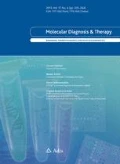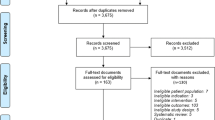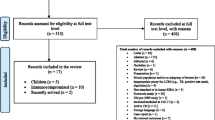Abstract
Background: The prevalence of tuberculosis (TB) in the elderly is higher than that in the general population, and elderly populations are considered a high-risk group. Currently, annual TB screening of Bacille Calmette-Guérin (BCG)-vaccinated people aged over 65 years is performed by an annual chest x-ray examination (CXR) in Japan. Interferon-gamma release assays (QuantiFERON®-TB Gold and QuantiFERON®-TB Gold In-Tube [QFT]) are new alternatives to the tuberculin skin test to diagnose latent TB infection (LTBI) that have no cross-reactivity with the BCG vaccine. We evaluated the cost effectiveness of QFT versus CXR versus no screening in BCG-vaccinated elderly populations.
Methods: We constructed a Markov model to evaluate the cost effectiveness of QFT, CXR, and no screening. The target population was a hypothetical cohort of 1000 immunocompetent 65-year-olds, using a societal perspective and a lifetime horizon. All costs and clinical benefits were discounted at a fixed annual rate of 3%.
Results: In the base-case analysis, a no-screening strategy resulted in the lowest cost ($US303.51; 14.6475 quality-adjusted life-years [QALYs]) compared with CXR ($US393.22; 14.6477 QALYs) and QFT ($US525.45; 14.6516 QALYs) [year 2008 values]. The sensitivity of QFT, as well as the prevalence of TB and LTBI, influenced the cost effectiveness; when the sensitivity of QFT was higher than 0.89, QFT became more cost effective than providing no screening. As the prevalence of LTBI and TB increased, the QFT strategy became progressively more cost effective.
Conclusions: Providing no routine TB screening is currently the most cost-effective strategy for BCG-vaccinated elderly populations in Japan. There appears to be little role for CXR in TB screening of elderly populations. These findings may be applicable to other countries with intermediate and high TB risks when choosing optimal TB screening of elderly populations.







Similar content being viewed by others
References
Ohmori M. Probability of having latent tuberculosis infection in Japan [in Japanese]. Tokyo: Research Institute of Tuberculosis, 2009 May [online]. Available from URL: http://jata.or.jp/rit/ekigaku/ [Accessed 2010 Feb 14]
Berrington de González A, Darby S. Risk of cancer from diagnostic x-rays: estimates for the UK and 14 other countries. Lancet 2004; 363: 345–51
Pai M, Zwerling A, Menzies D. Systematic review: T-cell-based assays for the diagnosis of latent tuberculosis infection: an update. Ann Intern Med 2008 Aug 5; 149(3): 177–84
Diel R, Schaberg T, Loddenkemper R, et al. Enhanced cost-benefit analysis of strategies for LTBI screening and INH chemoprevention in Germany. Respir Med 2009 Dec; 103(12): 1838–53
Hardy AB, Varma R, Collyns T, et al. Cost-effectiveness of the NICE guidelines for screening for latent tuberculosis infection: the QuantiFERON-TB Gold IGRA alone is more cost-effective for immigrants from high burden countries. Thorax 2010 Feb; 65(2): 178–80
Kowada A, Takahashi O, Shimbo T, et al. Cost effectiveness of interferon-gamma release assay for tuberculosis contact screening in Japan. Mol Diagn Ther 2008; 12(4): 235–51
Ministry of Health, Labor and Welfare. Epidemiology of tuberculosis in Japan, 2008 [in Japanese]. Tokyo: Ministry of Health, Labor and Welfare, 2009 [online]. Available from URL: http://www.mhlw.go.jp/bunya/kenkou/kekkaku-kansenshou03/08.html [Accessed 2010 Feb 20]
Research Institute of Tuberculosis. Tuberculosis reaction surveillance [in Japanese]. Tokyo: Research Institute of Tuberculosis, 2009 [online]. Available from URL: http://jata.or.jp/rit/ekigaku/ [Accessed 2010 Mar 20]
Tuberculosis Research Committee (Ryoken). Relapse rate of tuberculosis treated with standard regimen of chemotherapy [in Japanese]. Kekkaku 2009; 84:617–25
Horsburgh Jr CR. Priorities for the treatment of latent tuberculosis infection in the United States. N Engl J Med 2004; 350(20): 2060–7
Yoshiyama T. Cost effectiveness analysis of isoniazid preventive therapy to the contacts of tuberculosis patients under Japanese settings. Kekkaku 2000; 75(11): 629–41
Stead WW, To T, Harrison RW, et al. Benefit-risk considerations in preventive therapy for tuberculosis in elderly persons. Ann Intern Med 1987; 107(6): 843–5
International Union Against Tuberculosis Committee on Prophylaxis. Efficacy of various durations of isoniazid preventive therapy for tuberculosis: five years of follow-up in the IUAT trial. Bull World Health Organ 1982; 60: 555–64
Fountain FF, Tolley E, Chrisman CR, et al. Isoniazid hepatotoxicity associated with treatment of latent tuberculosis infection: a 7-year evaluation from a public health tuberculosis clinic. Chest 2005; 128(1): 116–23
LoBue PA, Moser KS. Use of isoniazid for latent tuberculosis infection in a public health clinic. Am J Respir Crit Care Med 2003; 168(4): 443–7
Diel R, Loddenkemper R, Nienhaus A. Evidence-based comparison of commercial interferon-gamma release assays for detecting active TB: a meta-analysis. Chest 2010; 137: 952–68
Dasgupta K, Menzies D. Cost-effectiveness of tuberculosis control strategies among immigrants and refugees. Eur Respir J 2005; 25: 1107–16
Igakutsushinsya. Medical insurance reimbursement table in Japan [in Japanese]. Tokyo: Igakutsushinsya, 2008 [online]. Available from URL: http://igakutushin.co.jp/index1.php?contenturl=page1.php?sid=299 [Accessed 2009 Jul 19]
Ministry of Health, Labor and Welfare. Basic survey on wage structure in Japan [in Japanese]. Tokyo: Ministry of Health, Labor and Welfare, 2007
Diel R, Nienhaus A, Schaberg T. Cost-effectiveness of isoniazid chemo-prevention in close contacts. Eur Respir J 2005; 26(3): 465–73
Statistics Bureau, Ministry of Internal Affairs and Communications. Life tables, 2005. Tokyo: Statistics Bureau, 2008 [online]. Available from URL: http://www.stat.go.jp/english/index/official/202.htm [Accessed 2010 Feb 20]
Ferrara G, Losi M, D’Amico R, et al. Interferon-gamma-release assays detect recent tuberculosis re-infection in elderly contacts. Int J Immunopathol Pharmacol 2009 Jul–Sep; 22(3): 669–77
Salpeter S, Sanders G, Salpeter E, et al. Monitored isoniazid prophylaxis for low-risk tuberculin reactors older than 35 years of age: a risk-benefit and cost-effectiveness analysis. Ann Intern Med 1997; 127: 1051–61
Tuberculosis Research Committee. Drug-resistant Mycobacterium tuberculosis in Japan: a nationwide survey, 2002. Int J Tuberc Lung Dis 2007; 11: 1129–35
Organization for Economic Co-Operation and Development. PPPs for GDP -historical series. Paris: Organization for Economic Co-Operation and Development, 2008 [online]. Available from URL: http://www.oecd.org/dataoecd/61/56/39653523.xls [Accessed 2010 Jul 22]
Oxlade O, Schwartzman K, Menzies D. Interferon-gamma release assays and TB screening in high-income countries: a cost-effectiveness analysis. Int J Tuberc Lung Dis 2007 Jan; 11(1): 16–26
Pai M, O’Brien R. serial testing for tuberculosis: can we make sense of T cell assay conversions and reversions? PLoS Med 2007 Jun; 4(6): e208
Beffa P, Zellweger A, Janssens JP, et al. Indeterminate test results of T-SPOT.TB performed under routine field conditions. Eur Respir J 2008; 31: 842–6
Lee SW, Jang YS, Park CM, et al. The role of chest CT scanning in tuberculosis outbreak investigation. Chest 2010; 137: 1057–64
Lew WJ, Jung YJ, Song JW, et al. Combined use of QuantiFERON-TB Gold assay and chest computed tomography in a tuberculosis outbreak. Int J Tuberc Lung Dis 2009 May; 13(5): 633–9
Acknowledgments
No sources of funding were used to conduct this study or prepare this manuscript. The authors have no conflicts of interest that are directly relevant to the content of this study.
Author information
Authors and Affiliations
Corresponding author
Rights and permissions
About this article
Cite this article
Kowada, A., Deshpande, G.A., Takahashi, O. et al. Cost Effectiveness of Interferon-Gamma Release Assay versus Chest X-Ray for Tuberculosis Screening of BCG-Vaccinated Elderly Populations. Mol Diag Ther 14, 229–236 (2010). https://doi.org/10.1007/BF03256378
Published:
Issue Date:
DOI: https://doi.org/10.1007/BF03256378




